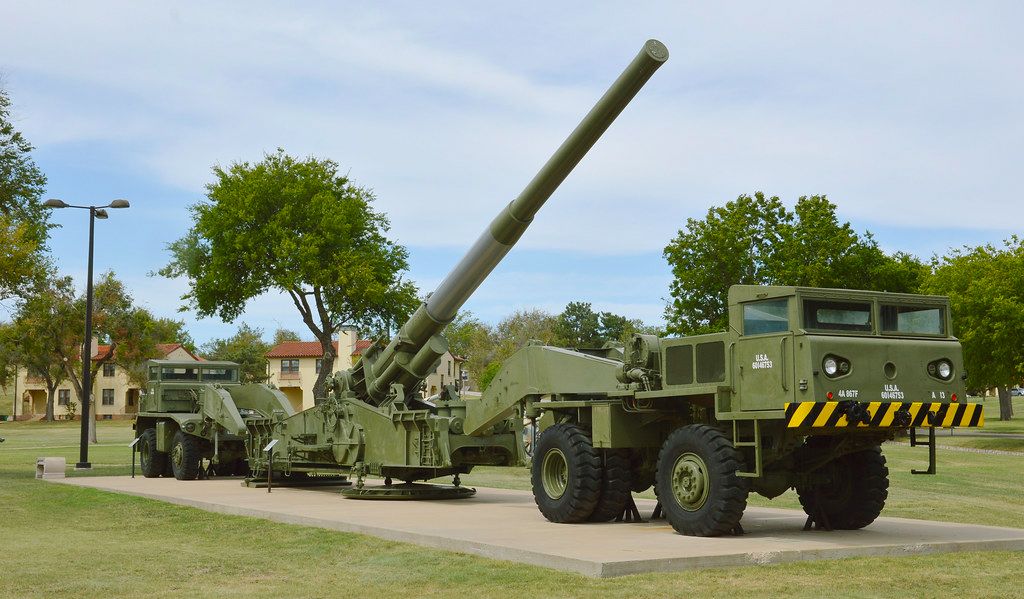The Key Role of Strategic Artillery in Deterrence
During my visit last year to Germany, my friend and colleague Dr. Holger Mey, as always, has been my dialogue partner in thinking through things in terms of European defense.
In our discussion of particle ways to ramp up Germany’s ability to support close proximity allies against Putin’s Russia, he underscored that the role of German artillery and its modernization is a solid path to reinforcing Baltic defense.
Given the geographical proximity to the Baltic region, modernized German artillery could play an important role in reinforcing an overall quick response capability for Baltic defense.
And in a recent article by Richard D. Fisher, Jr. with regard to the defense of Taiwan, he highlighted as well the role which strategic artillery could play in that island’s defense.
Before turning to his argument, the value of such a capability is that can be rapidly engaged against adversary actions, with significant disruptive effect on those actions.
In an article published on March 16, 2020 in the Tapei Times, Fisher outlined his case for the importance of modernized strategic artillery.
The Trump Administration’s most important near-term response to the PLA’s overall threat has been to invest in the development of many new cruise and ballistic missiles, some armed with new hypersonic warheads and some armed with new tactical nuclear warheads. By 2024 these may equip US Navy, Air Force and Army forces and may also be deployed in Asia.
But in addition, the US Army has indicated, first cryptically in late 2019, but more recently with leaked images, that it intends to develop a new Strategic Long-Range Cannon (SLRC) by 2023. The SLRC will revive strategic artillery in that it will have a range of over 1,800km (1,150 miles), with a shell that may only cost US$500,000, potentially much cheaper than a missile of similar range. Also, many more rounds can be stored for potential use.
Mounted on a mobile large truck trailer, the SLRC may fit into the C-17 heavy transport aircraft, meaning it could be rapidly moved to many locations. While the US Army has not revealed how the SLRC is able to achieve such fantastic range, the Army is known to be interested in ramjet-powered artillery shells. But future versions of these shells could be designed to intercept aircraft or to deploy stratospheric pseudo-satellites, should the PLA attack Low Earth Orbit surveillance and targeting satellites.
The SLRC could essentially defeat PLA aggression before it begins and make toothless PLA coercive exercises against Taiwan. From Japan’s Ishigaki Island, the SLRC could immediately attack all PLA naval, air, space and missile forces on Hainan Island. It could also attack all PLA invasion nodes gathering from Hainan to the Bohai Sea. From Kadena Airbase on Okinawa, the SLRC could potentially cover all of North Korea and defeat PLA and Russian bombers operating from the Sea of Okhotsk to Hong Kong.
From potential bases in South Korea, the SLRC could fire non-nuclear shells at most of China’s nuclear intercontinental ballistic missile (ICBM) bases, especially those placed in relatively new extensive underground tunnels. When added to ongoing US theater ballistic, hypersonic and cruise missile programs, the SLRC will produce more incentive for Beijing to consider arms control dialogues with Washington.
Of course, the SLRC is not yet a reality, but this could change as soon as 2024. It is not a complete antidote to Xi Jinping’s “China Dream” for Taiwan, but it could guarantee the failure of a PLA attempt to invade Taiwan. As such, it is clear warning to Xi that his “China Dream” requires a far different and much happier ending.
The image of the new Army strategic artillery system is taken from the following source:
leaked-images-army-super-gun-strategic-long-range-cannon

